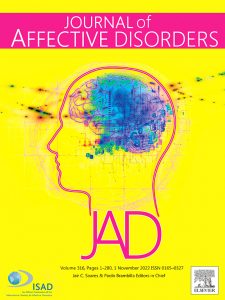
Effects of a probiotic add-on treatment on fronto-limbic brain structure, function, and perfusion in depression: Secondary neuroimaging findings of a randomized controlled trial
2023, Journal of Affective Disorders
DOI: 10.1016/j.jad.2022.12.142
Abstract
Background: Probiotics are suggested to improve depressive symptoms via the microbiota-gut-brain axis. We have recently shown a beneficial clinical effect of probiotic supplementation in patients with depression. Their underlying neural mechanisms remain unknown.
Methods: A multimodal neuroimaging approach including diffusion tensor imaging, resting-state functional MRI, and arterial spin labeling was used to investigate the effects of a four-weeks probiotic supplementation on fronto-limbic brain structure, function, and perfusion and whether these effects were related to symptom changes.
Results: Thirty-two patients completed both imaging assessments (18 placebo and 14 probiotics group). Probiotics maintained mean diffusivity in the left uncinate fasciculus, stabilized it in the right uncinate fasciculus, and altered resting-state functional connectivity (rsFC) between limbic structures and the temporal pole to a cluster in the precuneus. Moreover, a cluster in the left superior parietal lobule showed altered rsFC to the subcallosal cortex, the left orbitofrontal cortex, and limbic structures after probiotics. In the probiotics group, structural and functional changes were partly related to decreases in depressive symptoms.
Conclusion: Probiotic supplementation is suggested to prevent neuronal degeneration along the uncinate fasciculus and alter fronto-limbic rsFC, effects that are partly related to the improvement of depressive symptoms. Elucidating the neural mechanisms underlying probiotics’ clinical effects on depression provide potential targets for the development of more precise probiotic treatments.